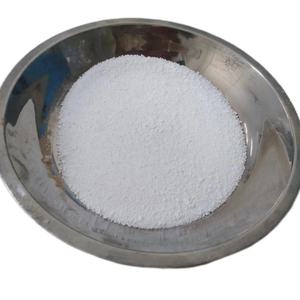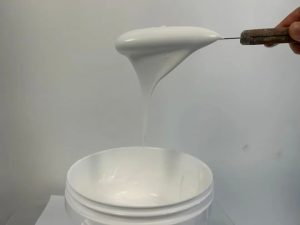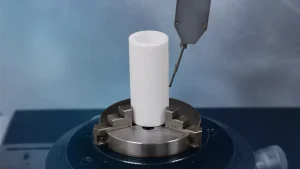Professional industry ceramic supplier, silicon nitride, silicon carbide, aluminum nitride and any other kinds of ceramics.
1. Introduction
Just 24 hours ago, a major supplier in the advanced ceramics industry announced a new line of RBSiC (Reaction-Bonded Silicon Carbide) crucibles designed for lab-scale metal melting with improved thermal shock resistance—highlighting growing demand for durable, high-purity silicon carbide crucibles in both industrial and research settings.

If you work with molten metals, glass, or high-temp lab processes, your silicon carbide crucible is likely one of your most critical—and expensive—tools. But without proper care, even the best silicon carbide crucible can crack, degrade, or contaminate your materials. This guide gives you clear, actionable steps to use and maintain your crucible correctly.
2. Understanding Your Silicon Carbide Crucible
Silicon carbide crucibles are prized for their exceptional thermal conductivity, resistance to thermal shock, and ability to withstand temperatures up to 1600°C (2912°F). Unlike alumina (Al2O3) or zirconia crucibles, silicon carbide offers faster heating and better structural stability under rapid temperature changes.
They’re commonly used in foundries, jewelry casting, and laboratories. You’ll also find related products like silicon carbide ceramic tiles, silicon carbide tubes, and even silicon carbide ceramic baking dishes—but crucibles require special handling due to direct contact with reactive melts.
3. Step-by-Step Guide to Using a Silicon Carbide Crucible
3.1. Pre-Use Inspection
Before first use—or after storage—inspect your silicon carbide crucible for cracks, chips, or surface glazing. Even hairline fractures can lead to catastrophic failure during heating.
- Check the interior for residue from previous melts.
- Ensure the crucible sits level in your furnace or kiln.
3.2. Proper Preheating (Crucial!)
Never place a cold silicon carbide crucible directly into a hot furnace. Thermal shock is the #1 cause of breakage.

- Start at room temperature.
- Ramp up slowly: 150–200°C per hour until you reach 600°C.
- Hold at 600°C for 30–60 minutes to burn off moisture and organic contaminants.
- Then gradually increase to your working temperature.
3.3. Loading and Melting
Fill the crucible no more than 75% full to prevent spillage. Avoid dropping solid charge material—it can chip the brittle ceramic lining.
Use compatible tools (e.g., graphite or silicon carbide tongs). Never use steel tools that can scratch or react with the crucible wall.
4. Common Problems and Solutions
4.1. Cracking or Spalling
Cause: Rapid heating/cooling or mechanical impact.
Solution: Always follow slow ramp rates. Allow the crucible to cool inside the furnace with the power off—never quench in air or water.
4.2. Glaze Formation or Surface Degradation
Cause: Reaction with certain fluxes or molten metals (e.g., aluminum, zinc).

Solution: Use a protective coating or switch to a silicon nitride crucible for highly reactive melts. Note: silicon nitride crucible factories often produce alternatives for aggressive chemistries.
4.3. Contamination of Melt
Cause: Impurities leaching from old crucibles or improper cleaning.
Solution: Dedicate crucibles to specific materials. Clean thoroughly between uses (see Section 5).
5. Cleaning and Storage
After use, let the crucible cool completely. Remove solidified residue with a soft brush or non-metallic scraper.
For stubborn deposits, heat gently to 500°C to oxidize organics, then brush clean. Avoid water immersion—silicon carbide is porous and absorbs moisture, leading to steam explosions during reheating.
Store in a dry, dust-free cabinet. Place on a silicon carbide ceramic plate or soft ceramic fiber mat to prevent chipping.
6. When to Replace Your Crucible
Even with perfect care, silicon carbide crucibles wear out. Replace if you notice:
- Deep pitting or thinning walls
- Repeated cracking despite proper heating
- Consistent contamination in your melts
Don’t try to patch or repair—it’s not safe at high temperatures.
7. Advanced Tips: Compatibility with Other Ceramics
Wondering how silicon carbide compares to other advanced ceramics? Boron carbide vs silicon carbide: boron carbide is harder but less thermally conductive—better for armor, worse for crucibles.
Silicon nitride (Si3N4) offers superior corrosion resistance in molten non-ferrous metals and is used in custom silicon nitride heat shields or silicon nitride rings. However, it’s more expensive and less conductive than silicon carbide.
For plumbing or structural parts, you might encounter silicon carbide ceramic pipes or silicon carbide ceramic tubes—but these aren’t substitutes for crucibles in melting applications.
8. Conclusion
A well-maintained silicon carbide crucible can last hundreds of cycles. The key is patience: slow heating, gentle handling, and smart storage. Whether you’re using it alongside silicon carbide ceramic dinner plates in a studio setting or in an industrial furnace with RBSiC silicon carbide tile blocks, respect its limits—and it’ll deliver reliable, high-performance results every time.
Our Website founded on October 17, 2012, is a high-tech enterprise committed to the research and development, production, processing, sales and technical services of ceramic relative materials such as How. Our products includes but not limited to Boron Carbide Ceramic Products, Boron Nitride Ceramic Products, Silicon Carbide Ceramic Products, Silicon Nitride Ceramic Products, Zirconium Dioxide Ceramic Products, etc. If you are interested, please feel free to contact us.




